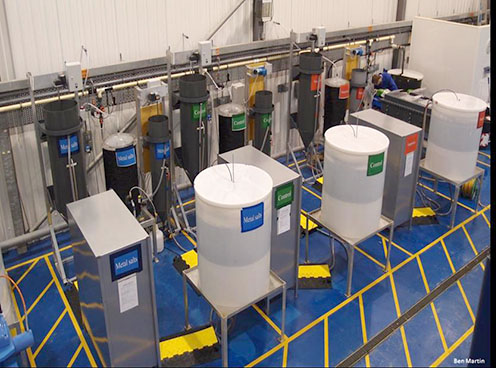UK research reveals potential environmental harm of nanomaterials
UK research reveals potential environmental harm of nanomaterials

Published on June 30, 2015
Nanomaterials are a common component in many industrial and consumer products. A team of international researchers, led by University of Kentucky scientists, have found that these tiny metal containing particles may be more toxic to plants and microorganisms than other forms of metals.
The group of scientists led by Jason Unrine, an assistant professor in the UK College of Agriculture, Food and Environment, studied biosolids from a simulated wastewater treatment system containing the nanomaterials silver, titanium dioxide and zinc oxide and examined their effects on plants and microorganisms. Their findings were presented in two papers recently published in the academic journal Environmental Science and Technology.
Nanomaterials from common consumer products like sunscreens, cosmetics and textiles end up in wastewater treatment facilities where they are removed from drinking water and reside with sewage sludge. Further processing at the plant turns this sludge into biosolids. About half of the biosolids produced in the U.S. and parts of Europe are used as soil amendments on agricultural and other lands and have been for many decades. Biosolids can provide needed nutrients and organic matter to the soil. In the United States, the U.S. Environmental Protection Agency regulates biosolids used as fertilizers.
Until recently, these nanomaterials have not been present in biosolids. The researchers wondered whether current EPA regulations for metals would be protective when biosoilds contained metal-based nanomaterials.
Unrine, along with fellow UK researchers Jonathan Judy and Dave McNear, Jr., studied the effects of the biosolids on legumes, soil microorganisms and nitrogen-fixing bacteria. They found that the biosolids with nanomaterials prevented the colonization of plants by nitrogen-fixing bacteria and changed the composition of microorganisms in the soil. As a result, the plants had stunted growth and took up far more zinc compared to biosolids containing typical forms of the meta
A study led by UKAg scientists Olga Tsyusko and Chun Chen studied the molecular mechanisms behind the adverse effects on the plants and their nitrogen-fixing bacteria. Their portion of the study found dramatic differences in expression of genes in the plants receiving biosolids containing nanoparticles compared to those receiving normal biosolids. They believe some of differences were likely caused by the increased zinc uptake.
“This study is the most realistic simulation of the potential effects of nanomaterials in biosolids on agricultural lands to date,” Unrine said. “It demonstrates that current regulations for biosolids may not be protective for nanomaterials, although current predicted concentrations of nanomaterials in biosolids are far below regulatory limits, and more work needs to be done to confirm these findings.”
Collaborators included researchers at Cranfield University in the United Kingdom, who constructed a pilot wastewater treatment plant, and researchers at Rothamsted Research in the United Kingdom, who mixed the biosolids containing nanomaterials with soil and allowed the mixture to age outdoors. The aged biosolids were sent to the University of Kentucky for analysis. A research team at Carnegie Mellon University examined the chemical form of metals in the soil.
The research project was funded by the EPA and the United Kingdom’s Natural Environment Research Council.
Research


